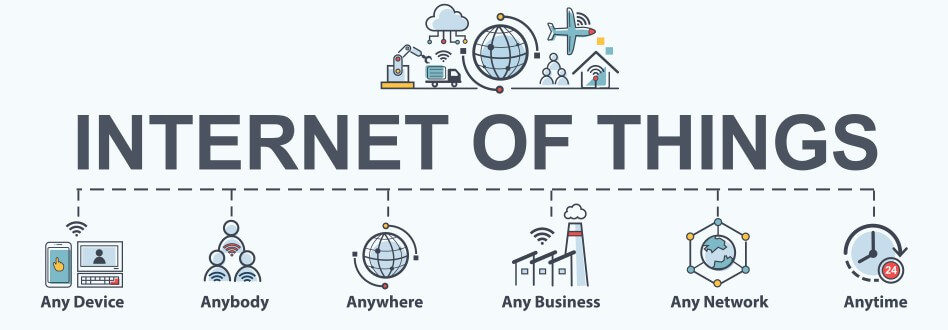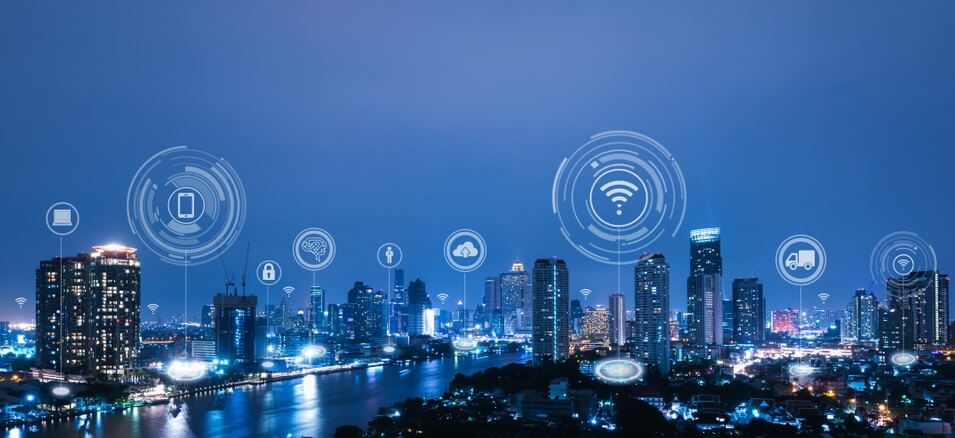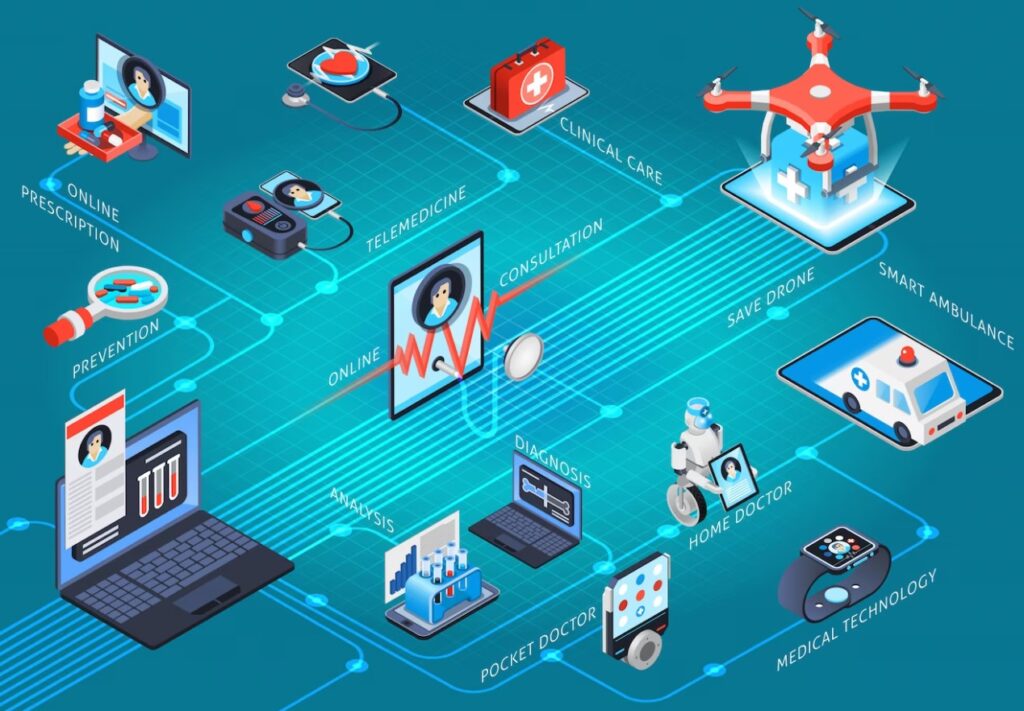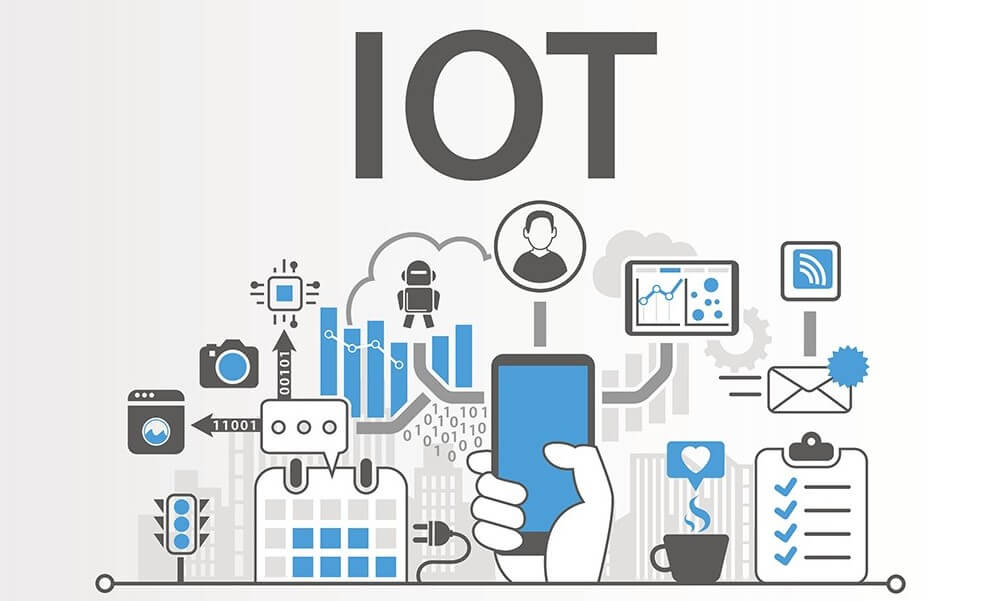In the present computerized age, the Internet of Things (IoT) has turned into a trendy phrase that is changing the approach in which we live, work, and collaborate with our environmental factors. From dazzling homes and linked urban communities to current computerization and medical treatment, IoT is assuming a critical position in disrupting different endeavors. In this far-reaching tutorial, we will dig into the realm of the Internet of Things, studying what it is and the manner in which it functions.
1 What is the Internet of Things IoT?

The Internet of Things (IoT) is a progressive idea that alludes to the connectivity of regular genuine products to the web and different devices. These articles, frequently alluded to as “savvy” or “associated” gadgets, can gather and transfer information without direct human involvement. IoT basically produces an organization of gadgets and frameworks that can convey, share data, and conduct tasks independently.
2 How Does the Internet of Things Function?
To comprehend how the Internet of Things functions, how about we break it into important elements and cycles:
1. Gadgets and Sensors
The Internet of Things starts with the sending of different gadgets furnished with sensors. These sensors can quantify a great many boundaries including temperature, stickiness, movement, and light, and that’s merely the tip of the iceberg. These devices can be anything from mobile phones and wearable contraptions to modern machinery and ecological monitoring frameworks.
2. Network
The network is the foundation of the Internet of Things. Gadgets need to speak with one another and deliver information to centralized servers or different gadgets. There are a few available choices accessible for IoT, including Wi-Fi, Bluetooth, Zigbee, cell organizations, and Low-Power Wide-Region Organizations (LPWANs) like LoRaWAN and Sigfox.
3. Information Assortment and Handling
When the gadgets receive information from their ambient elements, they convey this data to a focal center or cloud-based stage. This information can be primitive sensor information or managed data, depending upon the application. Distributed computing assets are numerous times employed to efficiently store and interact with this information.
4. Distributed computing and Information Stockpiling
The Internet of Things creates massive measurements of information, making distributed computing a critical component of the interaction. Cloud stages supply flexible and adaptable capacity arrangements, letting associations store and oversee huge datasets safely. Distributed computing likewise interacts with information inquiry and AI, empowering essential bits of knowledge to be acquired from the information.
5. Information Investigation and Bits of Knowledge
After the material is received and put aside, crucial insights can be reviewed. Artificial intelligence calculations and information examination devices can assist with recognizing examples, patterns, and abnormalities in information. These bits of knowledge can illuminate navigation, advance cycles, and further expand efficiency in distinct places, from prescient support in assembling to customized suggestions in the web-based business.
6. Activity and Mechanization
One of the basic objectives of IoT is to empower mechanization and dynamics in light of information. At the point when specified conditions or limits are fulfilled, IoT frameworks can fire off activities or cautions. For instance, a bright indoor regulator can consequently modify the temperature in view of inhabitance and weather patterns, or a modern machine may plan upkeep when sensors detect projected troubles.
7. UI and Cooperation
Clients communicate with IoT frameworks through easy-to-use points of interaction, for example, portable applications or web applications. These connection points enable continuing information representation, control, and customization choices. Clients can remotely watch and oversee related gadgets, making their lives more beneficial and effective.
3 Examples of IoT Applications

IoT has a great many applications across different businesses:
1. Smart Homes
In shrewd homes, IoT gadgets like indoor regulators, surveillance cameras, and voice collaborators increase accommodation and security. Clients have some control over lighting, temperature, and apparatuses from a distance, making their houses more energy-proficient and safe.
2. Medical care
IoT assumes a basic part in far-off tolerant observation, wearable wellness gadgets, and shrewd clinical gear. Medical services suppliers can track patient vitals progressively and obtain caution for basic modifications.
3. Industrial IoT (IIoT)
Fabricating and current cycles profit from IIoT, where sensors and computerization streamline the creation, lessen personal time, and further increase item quality. Prescient assistance is a remarkable IIoT application.
4. Agriculture
IoT sensors and gadgets are utilized in precision horticulture to screen soil conditions, crop wellness, and climate. This knowledge supports ranchers in settling on informed judgments about water systems, preparation, and vermin management.
5. Smart Cities
IoT innovation is utilized to regulate metropolitan foundations, including traffic signals, squandered executives, and energy usage. Shrewd urban regions intend to further increase competence, manageability, and personal pleasure for people.
4 Security and Protection Contemplations

While IoT offers various advantages, it likewise creates big security and protection problems. With increased gadgets involved with the web, the chance for cyberattacks and information breaks rises. Makers and clients should focus on safety efforts, for example, encryption and customary programming refreshes, to ease these hazards.
End
The Web of Things is an amazing innovation that is transforming the manner in which we cooperate with our current circumstances and the gadgets around us. By connecting regular objects to the web, gathering and investigating information, and empowering mechanization, IoT is boosting improvement throughout ventures and working on personal pleasure for people. In any event, while IoT continues to increase, fixing security and protection challenges will be important to guarantee its long-term advancement. With ongoing headways in IoT innovation, what’s in store assures many additional fascinating prospects and applications.
Summary
The Web of Things (IoT) addresses a great alteration in the manner we communicate with innovation and our general environment. IoT envelops a vast organization of interconnected gadgets, known as smart gadgets, that can independently acquire and trade information. This interconnection has introduced another time of accommodation, proficiency, and information-driven dynamic across distinct sectors, from medical services to farming.
Nonetheless, the broad reception of IoT comes with quite a lot of complications. Security and protection worries are crucial as these devices are impotent against intrusions and regularly capture delicate information. The variety of IoT gadgets from various makers can provoke interoperability challenges, obstructing consistent inclusion. Additionally, the major charges of executing IoT frameworks can create issues for more modest firms and associations.
To properly utilize the capability of IoT while regulating its drawbacks, there’s a requirement for a solid emphasis on security, straightforwardness, and industry standards. As IoT goes on increasing, tackling these concerns will be vital to ensure a protected and effective future for this remarkable innovation. Via attentively measuring the benefits and hindrances, the two people and associations can arrive at informed conclusions about accepting IoT arrangements that line up with their requirements and ideals.
